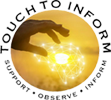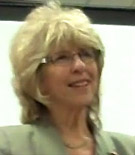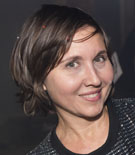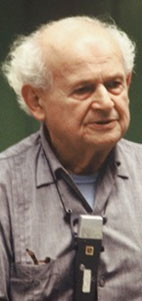Seminar Facilitators
Bonnie Kissam, M.A. in Education
Guild Certified Feldenkrais Practitioner® / Assistant Trainer
Licensed Massage Therapist, FL Lic #36256
“As a dancer, physical educator and trained massage therapist, I have always been fascinated by how the body works — and how to keep it working! In 1976, I was introduced to the work of body/mind pioneer Moshe Feldenkrais, D.Sc., who promoted the idea that we think, sense and act all at the same time. I am always excited to introduce the Method to others because Dr. Feldenkrais believed human beings have an enormous capacity to learn. If you are willing to think “skill” and not just “conditioning,” you can enhance your abilities effortlessly — no matter your age or condition — in a relatively short amount of time. When we can engage our attention as we move, our brains reawaken and receive information clarifying what we are doing. With awareness, new thoughts and abilities emerge. .”
Bonnie Kissam, M.A.
Bonnie has two Master Degrees, in Physical Education/Dance (1973) and Exceptional Student Education (2009). She studied with Moshe Feldenkrais, D.Sc., during his last years of teaching in 1980-1981. She maintained a private practice in Hartford, Connecticut for 20 years, which included being a Feldenkrais Practitioner® in physical therapy clinics, a teacher of Anatomy and Kinesiology for the Dancer at the Hartford Conservatory, and facilitator of numerous professional workshops.
Bonnie now resides in Sarasota, FL, providing individual lessons for all ages – from children to mature adults – teaching classes and workshops throughout the Southwest and Central Florida region. She developed a Certification program, TOUCH TO INFORM. It is a series of seminars for LMTs and other professionals who want a deeper understanding of The Feldenkrais Method® in order to include the concepts as part of their practice.
She is the author of The Effortless Swing® approach for optimal golf, which uses principles of The Feldenkrais Method® to maximize the ease and performance of golfers.
Bonnie is a graduate of the Amherst Feldenkrais® Professional Training Program (1983) and an Assistant Trainer. She also studied with Anat Baniel Method® of Neuromovement for Children with Special Needs.
Nikki Rollason
Guild Certified Feldenkrais Practitioner®
Licensed Massage Therapist, FL Lic #31953
Nikki was first introduced to the Feldenkrais Method® when she sought out a solution for her chronic dance injuries at 18. After graduating with her BFA in Dance from New World School of the Arts in 1997, she entered the Feldenkrais Institute’s Manhattan Professional Training Program, completing in 2002. The program transformed her dancing and her life with her chronic pain diminishing in the process. She began working with Feldenkrais Assistant Trainer, Bonnie Kissam in 2016 co-teaching TOUCH TO INFORM seminars, introducing Massage Therapists and other healthcare and movement practitioners to the power of gentle touch as communication to the nervous system. Her work as a rehabilitative movement coach is informed by both her Feldenkrais and Dance backgrounds.
Moshe Feldenkrais D.Sc.
 Creator of The Feldenkrais Method®
Creator of The Feldenkrais Method®
“Movement is life, life is a process. Improve the quality of the process and you improve the quality of life itself.”
Moshe Feldenkrais, D.Sc. (1904-1984) was a Mechanical Engineer and a Physicist who worked in the laboratories of Madam Curie. He was a judo master of Eastern European descent. With his broad range of knowledge in movement, learning theories, neuroscience, psychology and systems theory he created a Method, that when embraced by the participant, can improve their condition and ability to move, no matter how challenged. Over 60 years ago Dr. Feldenkrais understood that the brain had fluid properties and that one could, through attention to sensory –movement experiences, make shifts in the brain’s ‘image of action’
The pioneering mind/bodywork of Dr. Feldenkrais was first created to teach himself how to move without pain. He observed that his inability to improve his walking after a knee injury was due more to an old movement pattern he had learned early on in life, than the knee itself. He hypothesized that to make a shift in a movement pattern to create a new action, he would need to unlearn the old pattern and bring his old ‘image of action’ back to neutral. He then replicated the natural learning explorations of sensing and noticing differences we did as children to rebuild a new ‘image of action’. Through attention and awareness, he learned that curiosity was the key to finding many different optimally organized ways for moving with ease and efficiency. This curiosity brought back to him a sense of wholeness in thought, attitude, and action.
As he continued to teach his process to others, he realized his way of approaching a problem stimulates a sense of empowerment and cognitive pursuits in his students. He soon realized that learning how to learn was more important than the learning itself.
He first taught the Method to 13 students in Israel in the late 60s. In the early 1970s, Dr. Feldenkrais was embraced in California in the United States at Esalen and began professional training in San Francisco (1975-1977) and Amherst, Massachusetts (1980-1983). His Method is now taught throughout the World by a group of highly skilled trainers and their assistants in an 800-hour program that extends over four years. Today there are over 5000 certified practitioners
Moshe Feldenkrais also worked with children with special needs, becoming known for improving each child’s ability to move in spite of severe challenges. Dr. Feldenkrais defined learning as ‘discerning differences’. He observed that children learn through exploring movements. They try a new action, sense differences and make choices to form a pattern of action – be it to reach for an object or put a round donut in a round hole. He astutely understood that children who didn’t move fully due to early learning difficulties needed extra support in sensing their random movements before they could perform optimally in a fundamental action.
Moshe Feldenkrais, D.Sc., creator of The Feldenkrais Method®



